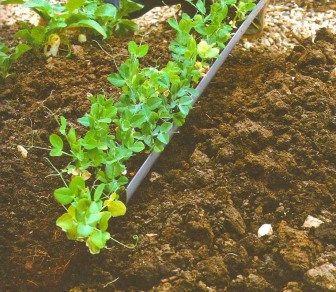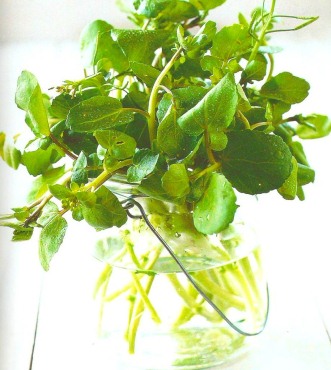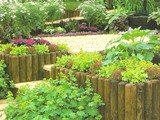|
Easy Vegetable Garden ProjectsAn easy vegetable garden can be highly rewarding and convenient especially if you’re strap for time. After all, it’s nice to grow some easy gardening vegetables with little effort. Here are some easy gardening tips that you can try when planting a vegetable garden…. Shallots Shallots are definitely ideal for an easy vegetable garden and are one of the earliest crops you can plant outside in a new year. They’re really worth growing especially if you love tasty food as they have a delicious milder flavor than onions. Here’s your checklist before you begin….
Are you ready to plant your shallots? Ok good. You can get your hands on those sets as they’re available at many garden centers or mail order suppliers. Now, let’s get ready to grow… February or March is a good time to plant the sets directly into the prepared ground. Space them 15cm (6inches) apart, in rows about 20cm (8inches) apart to provide them with enough room to grow. This will also allow you to easily hoe out any weeds that may develop between them. Place each of the bulbs with the tip hidden just below the soil level. All you need to do from here is to keep them weed free and fully watered in dry spells. Your shallots will be ready for harvest in July or August when the leaves naturally turn yellow. Use a fork to lift the clumps and be careful to not damage the bulbs. If you intend on storing them you can dry them off in the sun. Before you plant them, trim off any dry, wispy tops as birds may want to use them to tug the shallots out of the ground. Or…. You can cover them with some netting until they are well established into the ground. Easy Vegetable Gardening Tips for Planting SaladsIf your salad in the fridge doesn’t last long, why not grow your own to fulfill that demand. If you like to sow little and often, you can have the leaves coming right through to autumn. The best time for planting is March to August.  Here’s your salad checklist…
Salads are one of the fastest crops you can grow in an easy vegetable garden. However, to ensure that there’s more ready and waiting when you finish pick your first batch, look ahead and sow at regular intervals. If space is limited in your vegetable bed to accommodate several rows growing at different stages, sow the seed into modular trays filled with compost. Keep these under cover or at one side and then plant out the seedlings into the beds as gaps develop. If you tend to forget repeat sowing times, you can mark a reminder on your calendar or diary for example on the first Saturday or Sunday of every month. Vegetable Garden Guide for Sowing Peas in GutteringIf you experience difficulty with pea crops when sowing outdoors, a good solution is to start them off indoors instead. When you sow them in pots, be careful when transplanting the delicate young plants when it’s time to plant them out. Another solution that’s proven to be an easy guaranteed method is sowing the seeds into guttering.  The best time to do this is during March to May. Here’s what you’ll need….
First arm yourself with some plastic guttering and use a saw to trim it into lengths. Ensure that the lengths measure the same as the width of your vegetable bed. Add compost to fill each section while stopping just short of the ends and press down gently to level it with the rim. Evenly space your seeds along the length of the guttering at about 2.5 cm (1inch) apart in 2 rows and then push the seeds about 1cm down. Cover the seeds and place the guttering in an unheated greenhouse. Once the compost doesn’t dry out, the seeds should germinate in about a week’s time. When the seedlings are ready to be planted out, dig a shallow trench across your vegetable bed to the depth of the guttering. After doing that, slide the row of plants out of the guttering and straight into their new location. Thoroughly water your plants and push in canes next to them. As the plants grow, tie the stems to the canes. This sowing method is also excellent for other crops except root crops. It’s also very effective when sowing salad crops into succession as well. Growing Watercress in Home Vegetable Gardens The ideal time for growing your own watercress is April-September. Now you don’t need a pond or a stream to grow your own watercress. All you need is a few pots that are kept well watered and you’re good to go. See how easy, after all it’s an easy vegetable garden you’re building. Watercress fits very well in salads, soups and even sandwiches so it’s a nice crop to grow. Here’s what you need…
Ok now that you have your list, let’s get going… The first thing you do is to…. Fill your small pots with some multi-purpose compost, sprinkle the seeds and water well. The seeds should germinate within a couple of weeks. Continue to water them during this time and place them in some good light. Once they’ve developed good root systems, divide the baby plants and transfer the small clumps into the bigger pots. Water these pots on a regular basis and check them to ensure that they’re damp at all times. In about 4 to 6 weeks, the watercress will be ready for harvest and you can continue picking from the plants for some months. Once you harvest consistently, the plants will continue to produce fresh leaves so the more you pick the better.
Why not go ahead and try them out.
|









